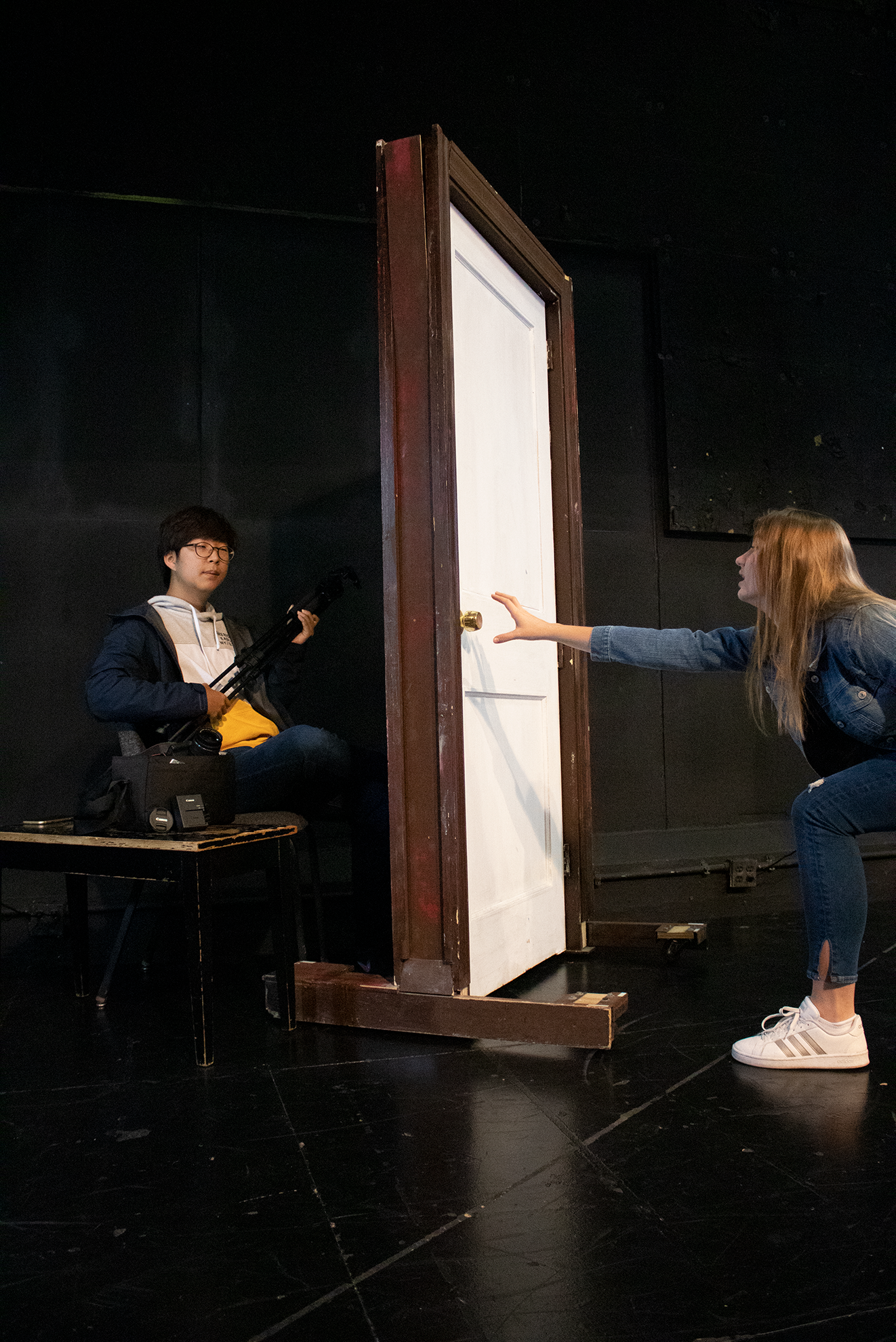Small class sizes limit RTVF students' ability to create films.

When Corrin Rosenstein (‘17) transferred to the Radio/Television/Film (RTVF) major their second year, they planned to concentrate in screenwriting or animation. But with most upper-level classes capped at around 12 or 15 students, Rosenstein was never able to take the required classes to specialize. Without formal skills in editing, cinematography or production, Rosenstein settled for a job in retail after graduation.
“I haven’t really found anything to do with my film degree,” Rosenstein says. “Maybe [it would’ve been different] if I had been able to get into more classes with actual practical skills.”
Among RTVF students, Rosenstein’s experience being closed out of classes isn’t uncommon. Fourteen out of 19 RTVF-exclusive classes offered this fall only have one section, and of those 14, the average class capacity is 24 students. Without RTVF 220: Analyzing Media Texts, which has a capactiy of 140, the average drops to just 15. Yet there are about 270 students in RTVF, according to the Office of the Registrar.
In spite of some student complaints, RTVF Department Chair Zayd Dohrn says providing individualized instruction and giving students access to limited equipment necessitates that these classes remain small.
Third-year Nelson Okunlola has been trying to take RTVF 380: Lighting and Cinematography since fall quarter of his second year at Northwestern. Not only would the class give him technical camera skills and count for the Directing for the Screen module, it would also grant him access to higher-quality, more expensive film equipment on campus. Students are only permitted to check out equipment from the RTVF equipment inventory, known as “the Cage,” if they have been trained with it in a production class.
“If I’m unable to take those classes, then what the heck is my full major going to be?” Okunlola says.
In response to the popularity of RTVF 380, the department is adding two cinematography courses with a digital emphasis (RTVF 374). This winter, the newly offered RTVF 374 will give students access to the same equipment as 380, with the exception of film cameras. But there are still only 15 spots in 374 and 13 in 380.
Second-year Scarlet Li needed a dolly (a wheeled cart that creates smooth horizontal camera movements) for a student film this quarter. But because her director of photography hadn’t taken RTVF 380, according to the Cage’s policy, they were turned away. Instead, Li was told to borrow a wheelchair from the Student Health Center.
Rosenstein remembers finding creative ways to get the equipment necessary for them to complete their assignments: sharing a camera with another group, borrowing from the media library or Communications Residential College and even paying another student to rent out his camera.
Hoping to expand access to equipment, RTVF Professor Eric Patrick ran a new camera workshop this fall. The department expected the workshop to “diversify the pool of potential cinematographers in the program,” Patrick wrote in an email. But the department didn’t consider students for the workshop if they hadn’t taken 380.
Dohrn says the workshop’s goal was to give students who have taken 380 access to another upper-level class. If the workshop model works, the department will roll it out more broadly next year. As of now, though, students like Okunlola can’t participate in the workshop.
“[The professors] are like, ‘Let’s diversify access to cameras, but only the people who already have access to cameras can get this camera knowledge,’” Okunlola says. “Please tell me what sense that makes.”
Second-year Maggie Brill says that, although she’s worried about being closed out of 380 as an upperclassman, selective classes haven’t tainted her RTVF experience so far since most of her learning happens outside the classroom. Brill co-founded the comedy show “The Deep End” spring quarter of her first year. Student-run clubs like Studio 22, NSTV, “The Deep End” and “The Blackout” act as informal supplements to RTVF courses.
“[Clubs feel] separated from the actual department, but almost everyone is somewhat involved in these organizations because people want to have hands-on experience,” Brill says. “It’s where the RTVF community comes together.”
However, many of these extra-curricular projects rely on grants from either student clubs or a faculty board. In 2018, 167 students signed a petition to reform the grant system, alleging that the faculty board’s selection process lacked diverse voices and accountability. The department made changes based on student proposals, but some still feel the process lacks transparency.
Fourth-year Andrew Taylor came to Northwestern expecting to compile a portfolio of films that he could showcase after graduation. But after the board denied him a grant on six separate occasions, Tayor never got to direct any grant-funded independent films. Eventually, he became so frustrated that he spent hundreds of dollars out-of-pocket for equipment to shoot a short on his own.
“It’s ridiculous that the only way to make films [outside of class] is by applying for a subjective grant in the first place,” Taylor says. “Everyone in film school should have the opportunity to make films.”
For Okunlola, the opportunity to join student-run clubs hasn’t made up for the lack of class time spent learning technical skills. He suggests high school students who want to pursue film go “literally anywhere else.” Rosenstein agrees.
“If you want to actually make movies or do screenwriting, [Northwestern’s] really not the best place to go,” Rosenstein says. “I wish I had thought more carefully about what I wanted to do.”
